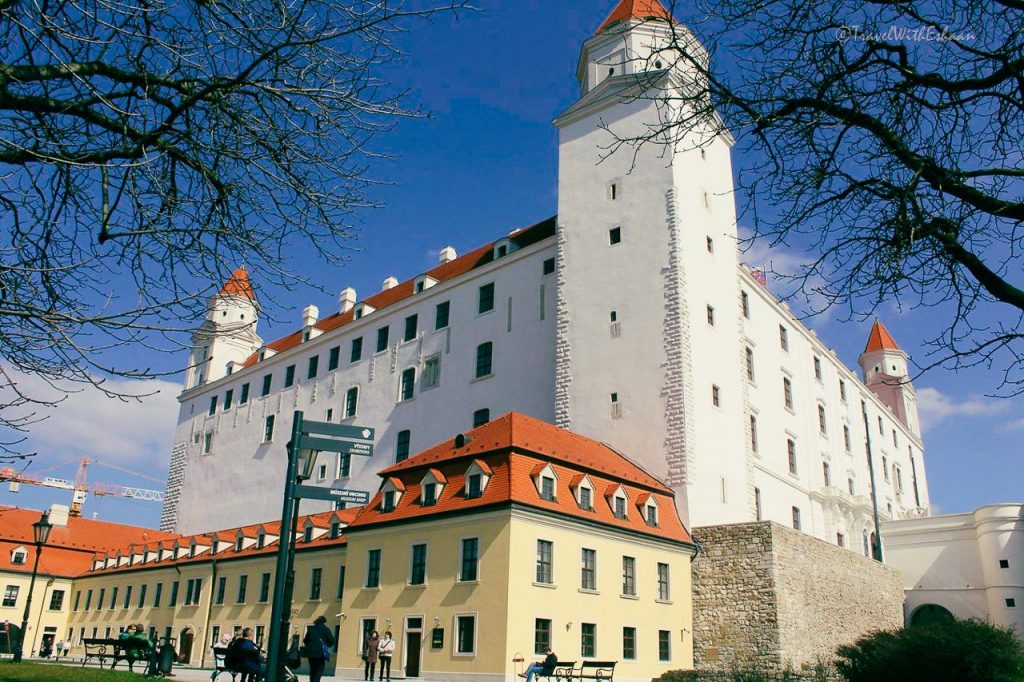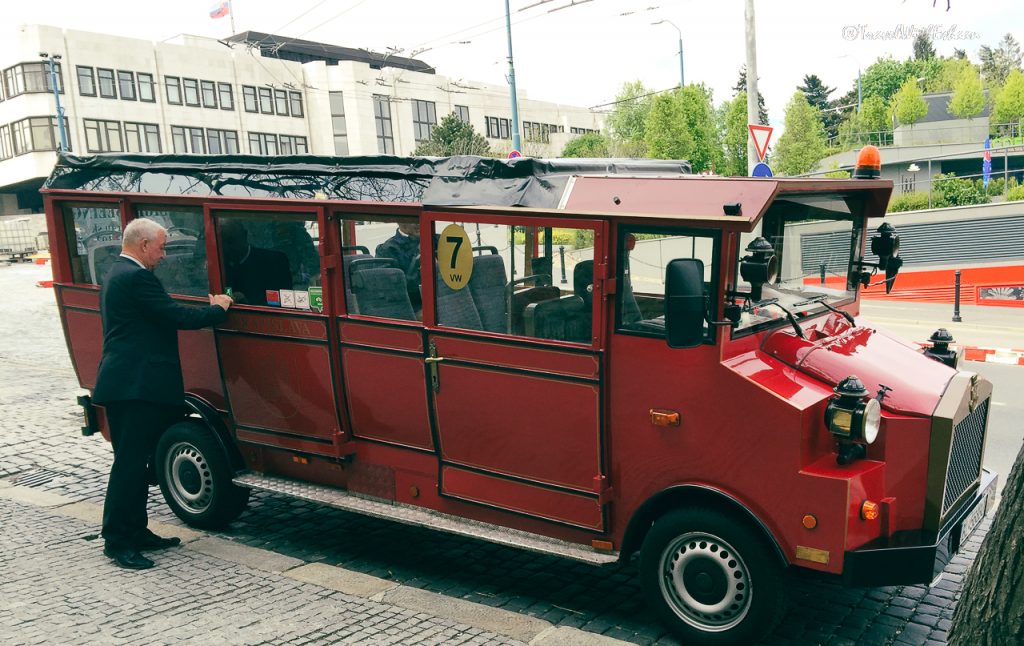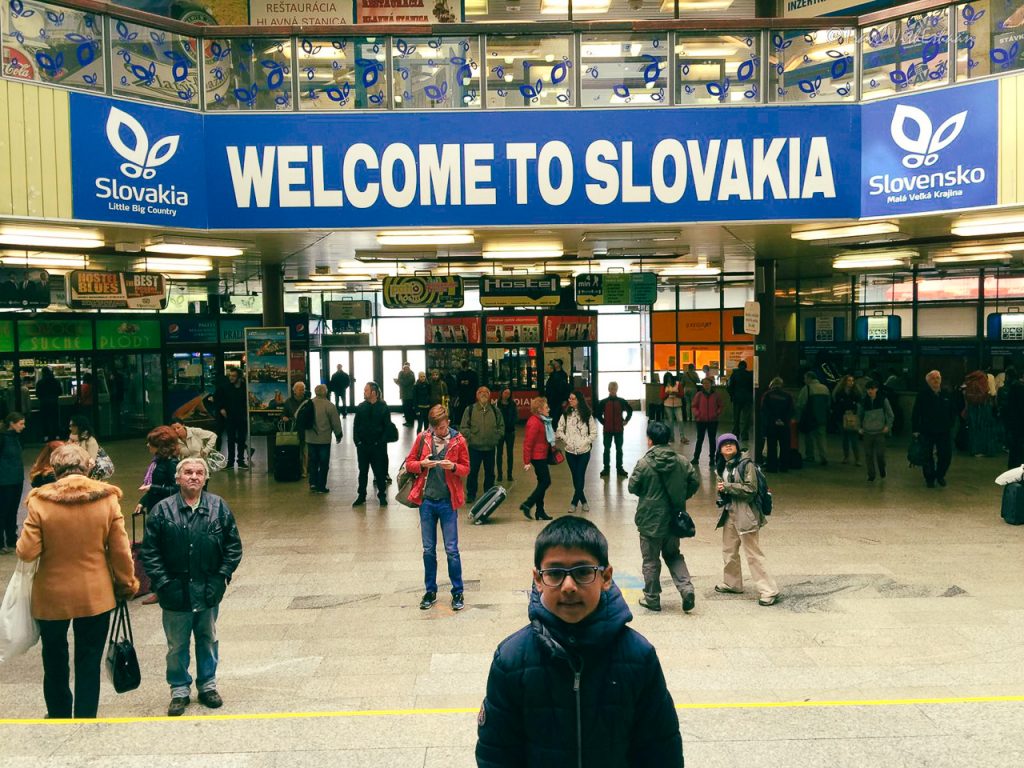
It was April of 2016, and we decided to take a day trip in Bratislava, the capital of Slovakia. We had a few reasons for choosing Bratislava. First was its proximity to Vienna, where we were staying. We wanted to maximize our time in the nation, so Bratislava, which has daily, nonstop train service to Vienna’s Hauptbahnhof train station, and speedy 1.5 hour transport time was the perfect option. Once we arrived in Bratislava, the next question was where to go.
Through research, we found a few places we intended to visit. First were the fortifications of Bratislava. They were built throughout the centuries and serve as a historical reminder of Slovakia’s domination by other countries. Second was Bratislava Palace. A huge white castle towering over the nearby hills, the Bratislava Palace, which was built from the 9th century AD to the 1600s served many purposes through the years. Third on our list was the old town, which was near the other attractions, and contains a lot of beauty. We also wanted to see some Soviet architecture. Our first destination during the trip was East Berlin, and since I was interested in the Soviet history, seeing the architecture in Bratislava would be a great experience.
“Ok, everything’s ready,” said my dad. We exited our Airbnb, and made our way to the metro. We got off at Hauptbahnhof station, and hopped on our train (but not before buying a hot chocolate).
It would be a short train ride, only an hour or so. We exited the train station, and before I knew it, we were in Bratislava.
We left the train station, and my dad showed me a sign. It said “Little Big Country”. Slovakia may be small, but in character, it’s huge.
The first place we visited was the Bratislava Castle. You can visit Bratislava Castle by public transportation (Trolleybus 203/207), or car, but we took the hike up the hill. It was worth it, as the view of the castle itself was wonderful.
Once we arrived at the castle, we took a tour inside, but it was rather underwhelming when compared to the outside. It was barren, especially when compared to the palaces overflowing with wealth I was accustomed to.
We trekked back to the old town, where most of the attractions were located. First, we saw the St. Michael’s gate, the only remaining part of the defenses of Bratislava. It wasn’t the most fancy building, just a single tall white tower with an arch cut through it, and a few windows, plus a nice double onion dome topped with a cross.
After that, we took pictures at perhaps the polar opposite of the St. Michael’s gate, the Church of St. Elizabeth. Built in 1913, it has relatively no history, but it makes up for this with beauty. With dazzling blue colors, the St. Elizabeth’s Church might not be historical, but it definitely had some beauty.
We returned to history with the old town, and walked around. Inside the old town, there’s a statue of a worker called (drumroll please) Man at Work. It’s also called Cumil the Sewer worker, and it was built to make the area more interesting, which it did. Incidentally, it has damaged a lot of cars by being on the side of the road.
Finally, we went Soviet Architecture hunting, where a man showed us some Soviet architecture around Bratislava, which was quite fascinating. I learned the defining features of a Soviet building and enjoyed it, but our train was coming, and we needed to return to Vienna.
If we had more time (an extra day or two), we would visit the Bratislava slums. It would be a personal experience, and I could learn about the Roma people, who migrated all the way from India to Europe, where they were persecuted. Nowadays, they are the second largest minority in Slovakia, and are much poorer than the Slovak population. Additionally, we didn’t see some of the wacky Soviet buildings such as Slovak Radio Building, an upside-down pyramid radio tower. In other words, we didn’t finish the book of Slovakia, but we started it, and that’s what matters.
Tips:
- Hike to the Bratislava Castle: Hiking to the castle is much more rewarding than going by car or via public transport: you get to see so many more views of the Castle and the city.


